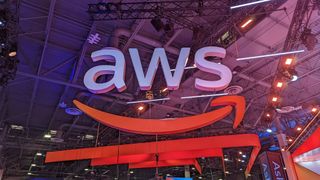AWS Local Zones are going global as Amazon widens cloud empire
AWS continues global expansion with 32 new Local Zones

Amazon has announced the expansion of its AWS Local Zones, small data centres that exist near to urban hubs, after testing the service for some time.
First announced back at its AWS re:Invent event in December 2021, the new AWS Local Zones will be available in 16 regions across the US, with Amazon planning to expand into 32 additional metropolitan regions across 26 countries.
The basic idea is to reduce the time it takes for data and computing power to travel, giving customers a faster experience. Amazon has applied a similar principle to its fulfilment centres, operating large centralised hubs alongside smaller warehouses.
Where to find Local Zones
"The vast majority of customers receive the necessary latency required to support their applications’ performance by running them in AWS Regions," says Amazon.
"However, for applications that require ultra-low latency (e.g., remote real-time gaming, media and entertainment content creation, live video streaming, engineering simulations, augmented and virtual reality, machine learning inference at the edge, etc.), customers want AWS infrastructure closer to their end users to support a seamless experience."
An AWS Local Zone provides customers better regional access to the company's services, meaning they should encounter faster and more reliable connectivity. This includes tools such as compute, storage and other cloud offerings at lower latency and more effective uptime.
The US zones are Atlanta, Boston, Chicago, Dallas, Denver, Houston, Kansas City, Las Vegas, Los Angeles, Miami, Minneapolis, New York City, Philadelphia, Phoenix, Portland, and Seattle.
Are you a pro? Subscribe to our newsletter
Sign up to the TechRadar Pro newsletter to get all the top news, opinion, features and guidance your business needs to succeed!
Globally, the new AWS Local Zones are Amsterdam, Athens, Auckland, Bangkok, Bengaluru, Berlin, Bogotá, Brisbane, Brussels, Buenos Aires, Chennai, Copenhagen, Delhi, Hanoi, Helsinki, Johannesburg, Kolkata, Lima, Lisbon, Manila, Munich, Nairobi, Oslo, Perth, Prague, Querétaro, Rio de Janeiro, Santiago, Toronto, Vancouver, Vienna, and Warsaw.
And the new Zones are already pleasing one huge customer: Netflix.
“Historically, artists had specialized machines built for them at their desks; now, we are working to move their workstations to AWS to take advantage of the cloud," says Netflix's Stephen Kowalski. "In order to provide a good working experience for our artists, they need low latency access to their virtual workstations. AWS Local Zones brings cloud resources closer to our artists and have been a game changer for these applications. By taking advantage of AWS Local Zones, we have migrated a portion of our content creation process to AWS while ensuring an even better experience for artists.”
- We've found the best cloud backup services around today
Max Slater-Robins has been writing about technology for nearly a decade at various outlets, covering the rise of the technology giants, trends in enterprise and SaaS companies, and much more besides. Originally from Suffolk, he currently lives in London and likes a good night out and walks in the countryside.

Russia's largest tech company just released a free AI tool that could save Microsoft, Google and Facebook tens of millions of dollars

16TB Portable SSD devices in the pipeline as key component vendor debuts world's first native USB4 controller — with 4GB/s read/write performance, it may even outperform your system SSD
Most Popular

